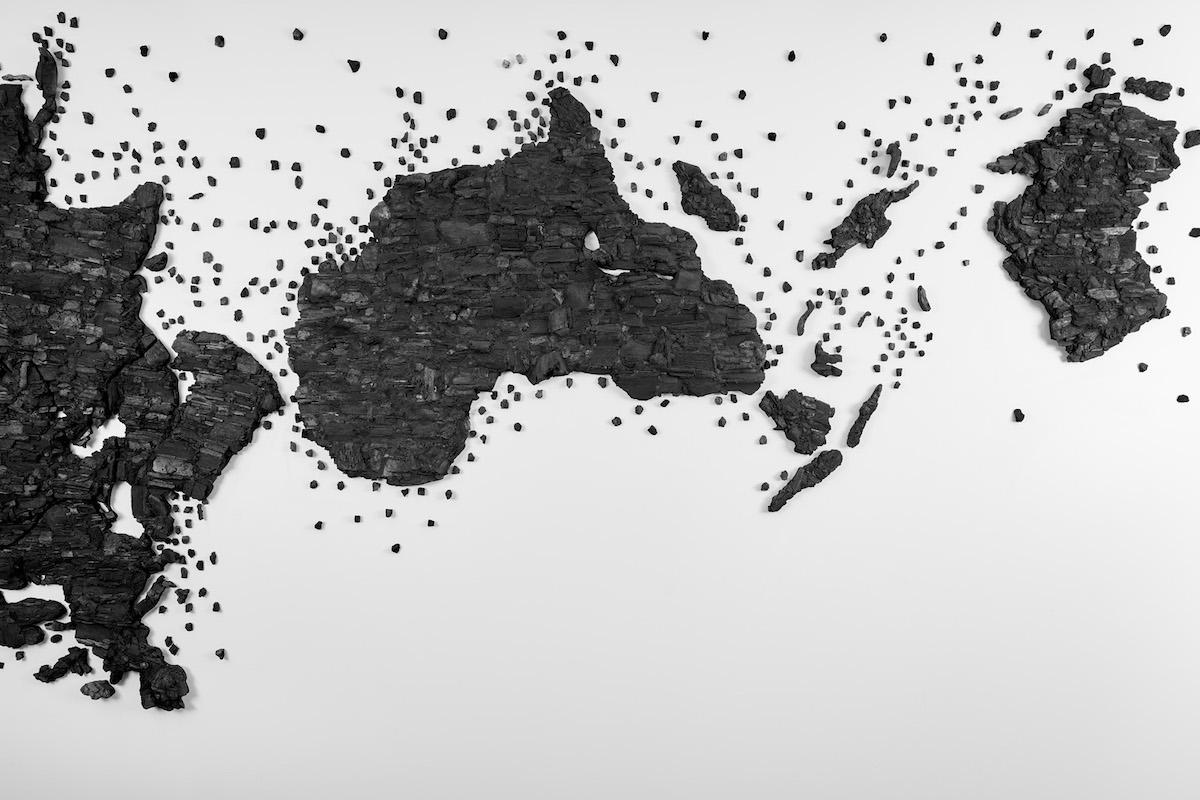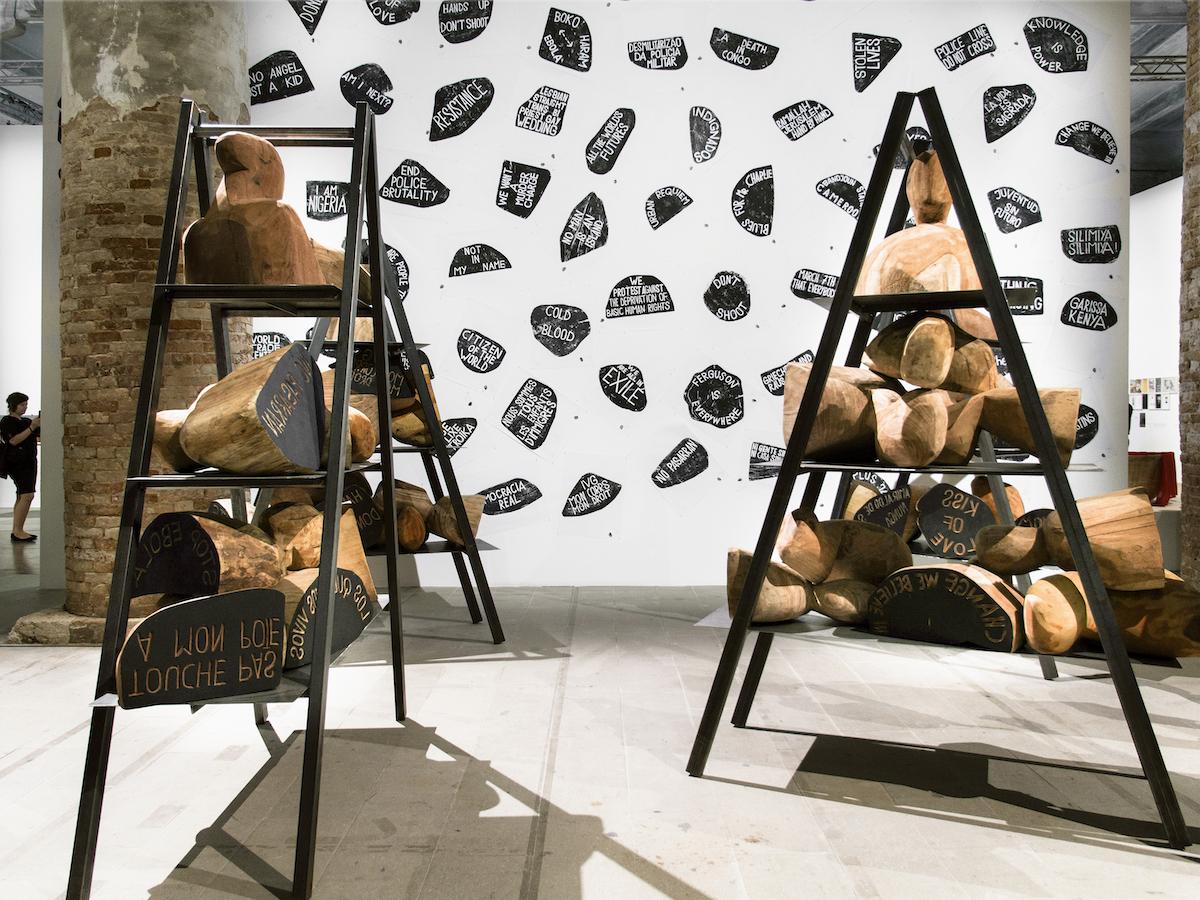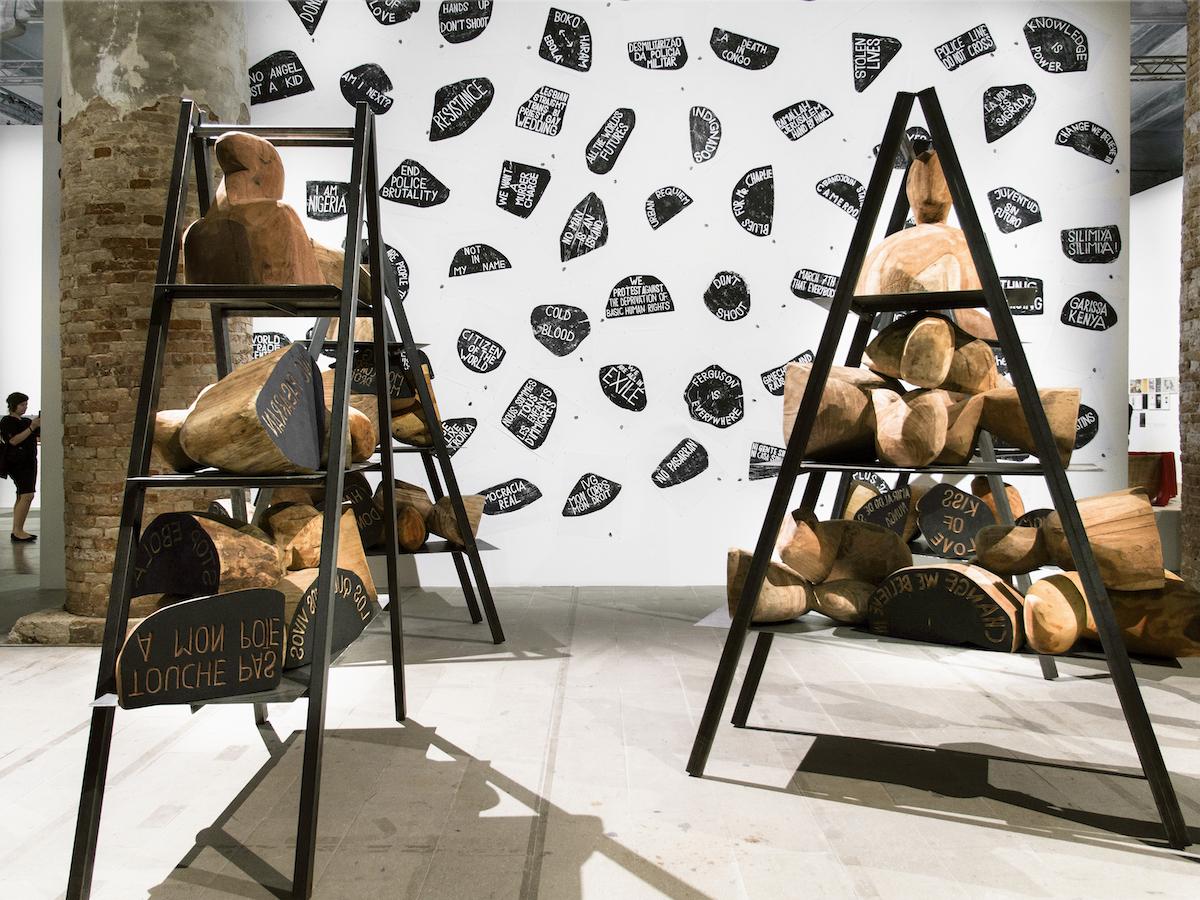In her former role as Deputy Director for Curatorial Affairs and Barbara Lee Chief Curator at the ICA/Boston, Respini organized critically acclaimed group exhibitions including Art in the Age of the Internet, 1989 to Today (2018) and When Home Won’t Let You Stay: Migration through Contemporary Art (2019) as well as solo exhibitions for Deana Lawson (2021) and Firelei Baez (2021). For The Armory Show, Respini has brought together a mix of artists some of whom she has worked with before such as Yinka Shonibare, Jean Shin, and Hank Willis Thomas, but she also took the opportunity to work with new artists such as Teresita Fernández, Shahzia Sikander and Woody De Othello. And the Agora at The Armory offers a great space to create dialogue between the works.
“The Agora is a very public and central place in the Javits Center—the very name recalls the ancient Greek concept of public assembly,” says Respini. “Like a town hall or piazza, it is also busy, and active with people meeting, discussing, or simply taking a break from the fair and people watching. I thought about the placement of works to create some interesting dialogues and juxtapositions, but also know that each work needs to stand on their own in this busy crossroads.”
Below are some highlights from this year’s Platform section.



































![DEl Kathryn Barton [Australian b. 1972] the more than human love , 2025 Acrylic on French linen 78 3/4 x 137 3/4 inches 200 x 350 cm Framed dimensions: 79 7/8 x 139 inches 203 x 353 cm](/sites/default/files/styles/image_5_column/public/ab15211bartonthe-more-human-lovelg.jpg?itok=wW_Qrve3)



